On April 23rd, 1967, the Soviet Union launched the first manned mission of their new Soyuz program. The Soviets had not launched a crew in 2 years, realizing that to get anywhere close to beating the Americans at a race to the moon they would need to produce a new spacecraft that could conduct a lunar landing mission. The core design was the Soyuz spacecraft, the descendants of which we use today.
This mission, Soyuz 1, was going to be something spectacular. While the 1965-1966 Gemini program of the United States had catapulted the Americans ahead in space accomplishments (as mentioned above, no Soviet flights had occurred during the time of Gemini), the Soviet Union wanted to reclaim their former glory and capitalize on the failure of Apollo 1, killing its crew before it ever got off the ground. Launching in time for the May Day celebrations, they figured, would be an ultimate way to show the supremacy of communism.
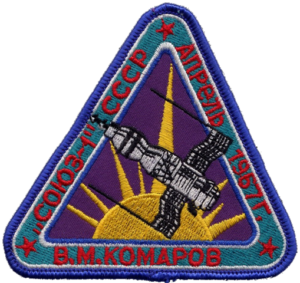
The mission plan was quite extravagant. Soyuz 1 would launch with 1 Cosmonaut on-board. Following its successful launch, a second manned Soyuz, Soyuz 2, would launch, carrying 3 cosmonauts. The vehicles would rendezvous and dock in orbit, and 2 members of the 2nd vehicle would conduct an extra-vehicular-activity and transfer to the first vehicle! (It’s worth noting the first versions of Soyuz did not have an internal transfer passage, like Apollo and later Soyuz would have, so an EVA was the only way to transfer from one vehicle to another at this time.)
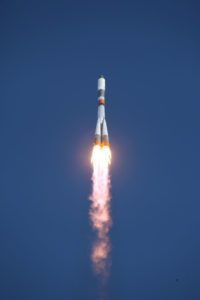
A (modern) Soyuz Booster in flight.
The Americans had conducted rendezvous and docking with unmanned Agena target vehicles, and had conducted several EVA’s, but never had they had 2 crewed vehicles dock, or had a crew transfer happen yet. If this plan worked, it certainly would put international favor in science and technology back in Russia’s hands.
There was a problem, though. A sever problem with Soyuz. The primary designed and genius behind the Soviet space program, Sergei Korolev, had died in early 1966. The genius behind Sputnik, the R-7 missile, the Vostok Spacecraft, and the man behind the core design and logic of Soyuz, died well before this mission could, no pun intended, get off the ground.
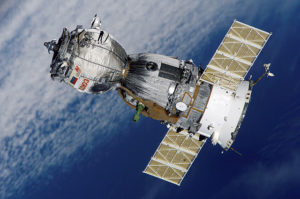
A modern Soyuz vehicle
Soyuz wasn’t quite right. While there were unmanned test flights before the planned launch of Soyuz 1, and only one of these even made it to orbit, and that flight wasn’t even all that successful – the vehicle suffered loss of orientation (attitude) control, and while it did successfully re-enter, it crashed into the iced over Aral Sea and had to be recovered from the water by divers (Soyuz and other Russian spacecraft traditionally have landed on, well, land). Still, it was determined Soyuz was good enough to launch.
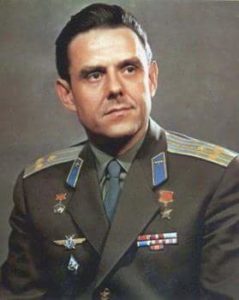
Vladimir Komarov
It wasn’t, and engineers and crew for the flight knew this, with a reported over 200 flaws documented in the vehicles design. The engineers and chosen pilot, Vladimir Komarov (who had previously flown on the historic Voshkod 1 Mission), voiced their objections to the quality and general design of the Soyuz 7K-OK vehicle variation that was to be flown, but those in charge demanded the mission happen regardless. The backup pilot, Yuri Gagarin, tried to get himself slated to replace Komarov on the flight, thinking that the Soviets wouldn’t risk him on the flawed spacecraft, but Komarov wouldn’t allow this to happen: He would fly a spacecraft that he felt would probably kill him.
The mission would launch on April 23rd, 1967, just shy of 3 months after the Apollo 1 fire. Upon reaching orbit, Soyuz 1 encountered the first of its many many errors – one solar wing failed to deploy, somewhat crippling the vehicle by cutting its total power supply to slightly under half of what it should be for successful flight. Additionally, the orientation detection system of the vehicle had failed – Komarov had to orient Soyuz 1 manually to keep what little power he could coming into the vehicle. There was certainly not going to be a docking with Soyuz 2.
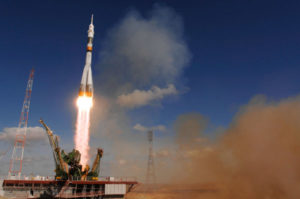
Soyuz 2 was planned to be changed to a rescue mission, attempting to free the stuck solar panel and maybe giving Soyuz 1 a better chance at successfully coming back down. The planned mission would be aborted when storms at the launch site would damage the electrical system on the Soyuz booster – Soyuz 2 wouldn’t launch, which was probably for the best…
By the 18th orbit, mission control had decided to abort and bring Soyuz 1 down. Komarov, amazingly, after 24 hours in orbit in a dying spacecraft, conducted the re-entry burn manually and was on his way back to the Earth.
For reasons still not fully understood, Soyuz 1’s main parachute simply did not deploy. Komarov initiate the emergency parachute deployment, but it got tangled up with the still attached drogue chute and also failed to deploy.
Komarov and Soyuz 1 would impact the ground at 89 miles an hour. The impact, of course, killed Komarov, and moments after landing the retro-rockets, intended to slow the vehicle for a nearly zero velocity impact to the Earth on a normal landing, fired, setting fire to the landing site.
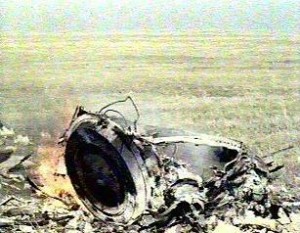
The remains of Soyuz 1
Recovery crews would eventually find the charred remains of Komarov strapped into the couch. The Soviets had lost one of their hero’s, and had a failure effectively as horrible as Apollo 1. Komarov would be buried as a hero to the Soviet Union, and the Soviet space program would be delayed for a year and a half, much like the American program was, with its next crewed launch being Soyuz 3 in October 1968. The Soviets would never make it to the moon, but interestingly, they would begin a Space Station program that we benefit directly from today; not without the Salyut program bringing its own tragedy early on.
45 Years Ago, The Sad End Of The Worlds First Space Station: Salyut 1
Back on the subject of Soyuz 2, after the failure of Soyuz 1 it was discovered the vehicle had the same flaws, including the parachute system, that Soyuz 1 did – had it flown, it probably wouldn’t have fared much better and almost certainly would have been a fatal mission for its crew as well.
